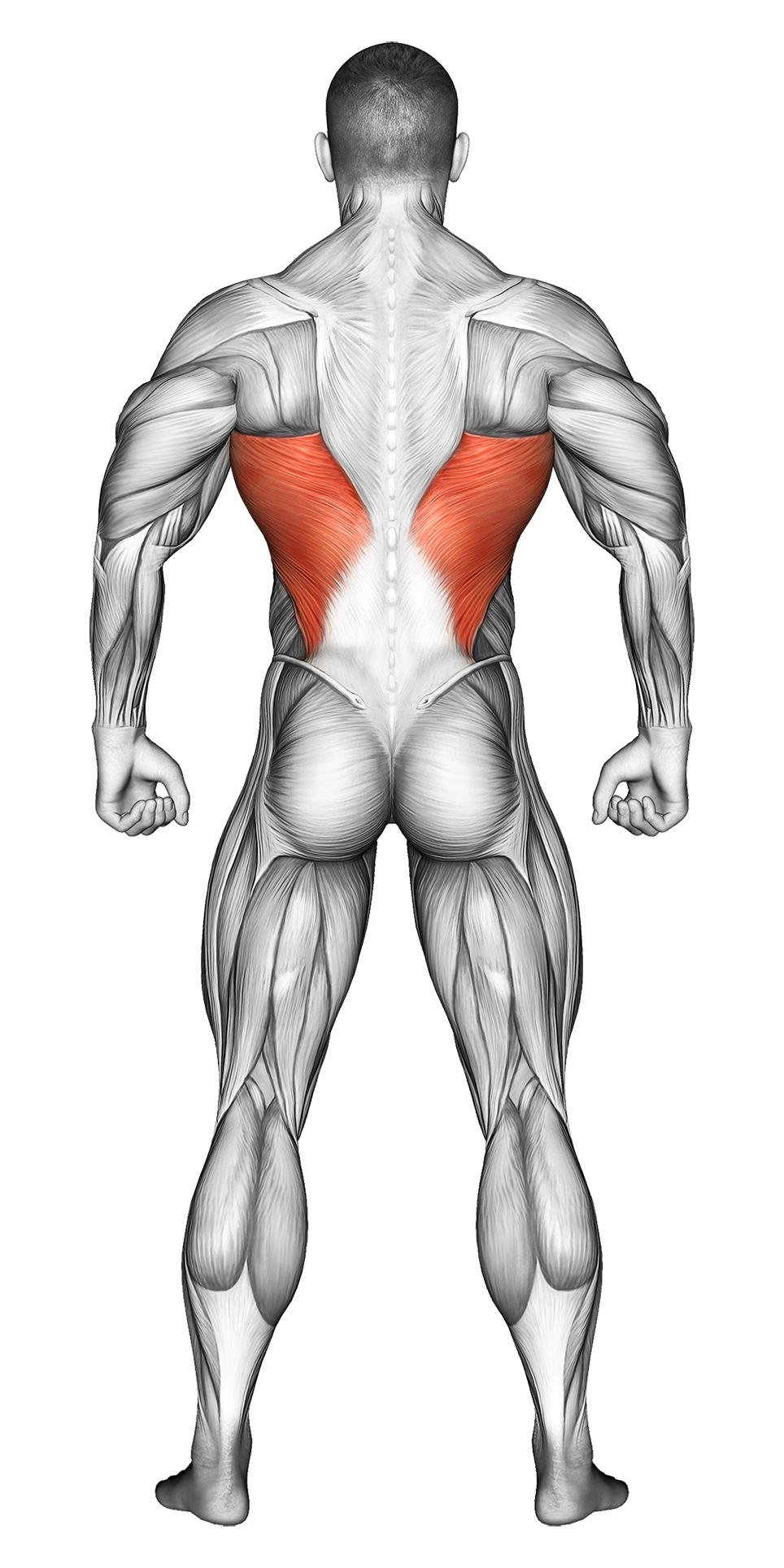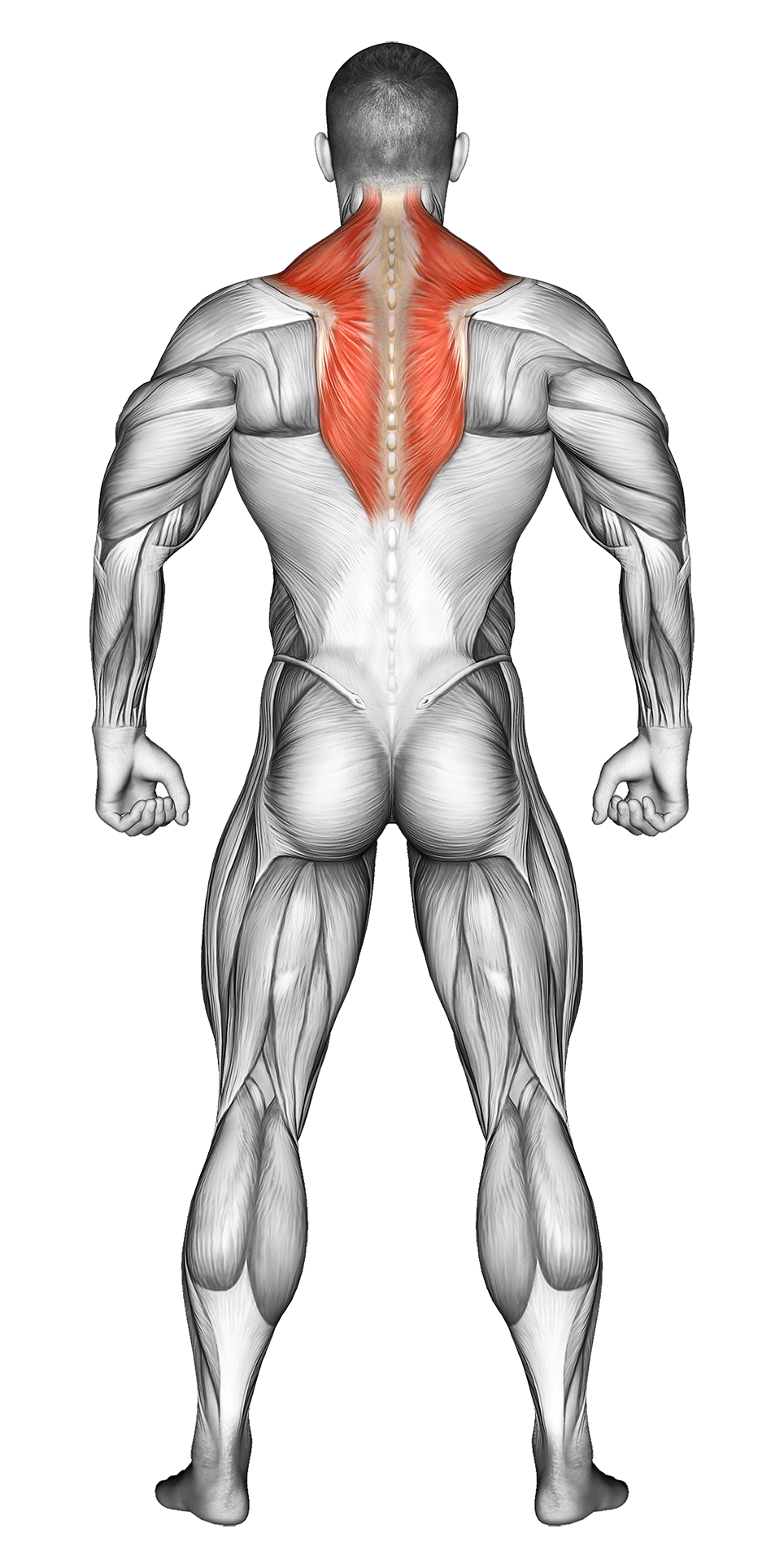Dumbbell Kroc Row: Video Tutorial & Exercise Guide
| Workout | Dumbbell Kroc Row |
| Primary Muscle Group | Lats |
| Secondary Muscle Group | Traps |
| Equipment Required | Dumbbell, Bench |
| Force Type | Pull |
| Mechanics | Compound |
| Exercise Type | Strength |
| Difficulty | Intermediate |
Dumbbell Kroc Row: Video Tutorial & Exercise Guide
Muscle Groups
- Primary Muscle Group- Secondary Muscle Group
Dumbbell Kroc Row - Step-by-Step Guide
Dumbbell Kroc Row Overview
Benefits of Dumbbell Kroc Row
Dumbbell Kroc Row Pro Tips & Advanced Techniques
Progression Plan for Dumbbell Kroc Row
Frequently Asked Questions (FAQs) Of Dumbbell Kroc Row
Secondary Muscles
How to do the Dumbbell Kroc Row – Step-by-Step Guide
- Step 1: Grab a heavy dumbbell and position yourself next to a sturdy bench. Place one hand and knee on the bench for support while keeping the other foot firmly on the ground.
- Step 2: Grip the dumbbell with your free hand and let it hang straight down, ensuring your back is flat and core tight.
- Step 3: Pull the dumbbell toward your hip in one explosive motion, focusing on driving your elbow back and squeezing your shoulder blade at the top.
- Step 4: Lower the dumbbell under control until your arm is fully extended. Don’t let the weight pull you down or round your back.
- Step 5: Perform the desired number of reps before switching sides and repeating the process.
Dumbbell Kroc Row Overview
The Dumbbell Kroc Row is a high-intensity variation of the traditional dumbbell row, designed to help build upper back strength and size. Named after powerlifter Matt Kroczaleski, this exercise emphasizes heavy weight and higher reps, often taken to failure.
It's a hybrid movement combining strength and endurance, making it ideal for athletes or lifters who want to push their limits. The Kroc Row primarily targets your lats, rhomboids, and traps, but also recruits the biceps and forearms.
Benefits of the Dumbbell Kroc Row
The Dumbbell Kroc Row is a powerful exercise for increasing back strength and muscle mass. It encourages heavy lifting, which leads to significant strength gains, especially in the lats and traps.
Due to the high-rep nature of the movement, it also builds endurance and grip strength, making it an excellent accessory exercise for deadlifts and other pulling movements.
Additionally, this row variation helps improve stability and balance in your shoulder girdle, reducing the risk of injury during heavy lifts.
Dumbbell Kroc Row Pro Tips & Advanced Techniques
Focus on pulling explosively during each rep, but control the lowering phase. A common tip is to "think of your elbow as the driving force" rather than your hand. Keep your back flat and core tight to avoid injury. Using straps can help when the weight gets heavy, especially for higher rep sets. Ready to challenge yourself? Go as heavy as you can while maintaining proper form.
Progression Plan for Dumbbell Kroc Row
| Level | Sets | Reps | Weight Progression |
|---|---|---|---|
| Beginner | 3 | 10-12 | Start with a moderate weight, focusing on form and building grip strength. Gradually increase the weight as you become comfortable with the motion. |
| Intermediate | 4 | 8-10 | Increase the weight every 1-2 weeks, working toward heavier loads and higher rep ranges for muscle growth and endurance. |
| Advanced | 4-5 | 15-20 | Go heavy and push yourself to near failure on each set. Use straps if necessary to maintain grip strength during higher reps. |
Frequently Asked Questions (FAQs) of Dumbbell Kroc Row
What muscles do Dumbbell Kroc Rows target?
Kroc Rows primarily target the lats, rhomboids, traps, and biceps, while also building grip strength and stability in the shoulder girdle.
How are Kroc Rows different from regular dumbbell rows?
Kroc Rows are typically performed with heavier weights and higher reps, often pushing the lifter to failure. They’re more intense and focus on both strength and endurance.
Should I use straps for Kroc Rows?
Yes, especially when using heavier weights. Straps help maintain grip strength during high-rep sets, allowing you to focus on working your back muscles.
How often should I include Kroc Rows in my routine?
Incorporate Kroc Rows 1-2 times per week as part of your back workout. They pair well with other pulling movements like pull-ups and deadlifts.
What common mistakes should I avoid?
Avoid rounding your back or swinging the weight up. Focus on pulling the dumbbell with control, and keep your back straight throughout the movement.
Share

